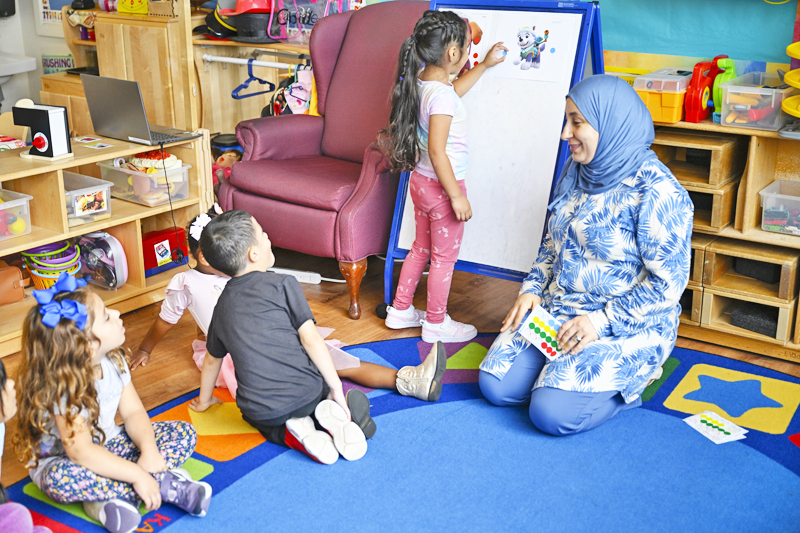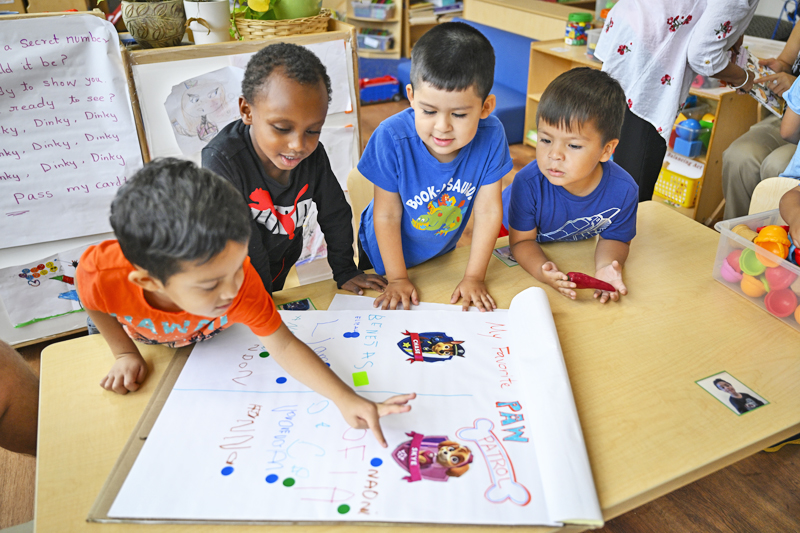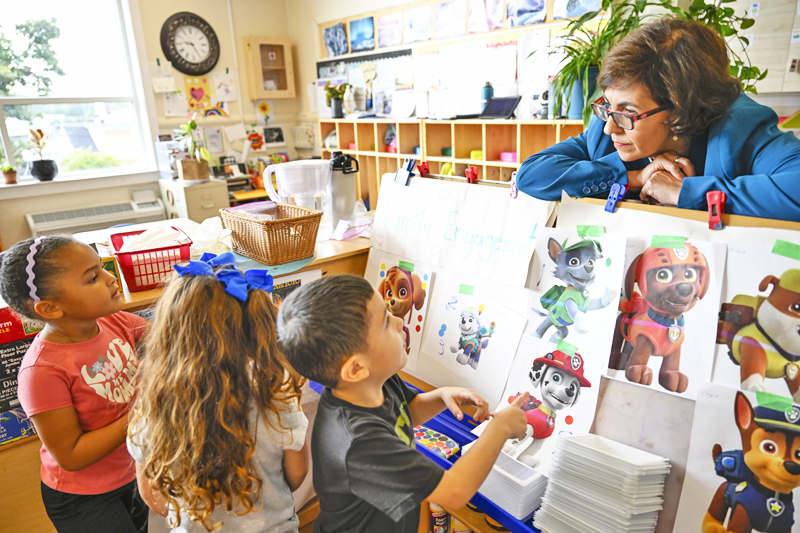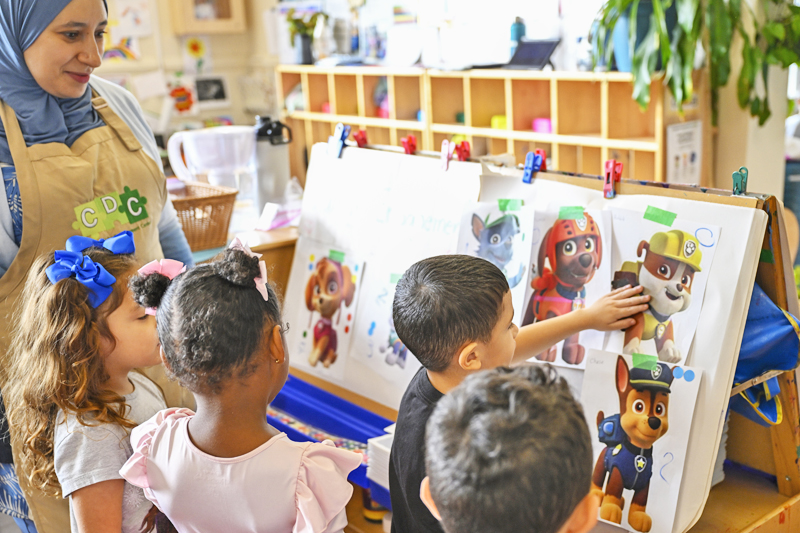ANNANDALE – As lawmakers voted on a budget deal in the US Capitol, a different kind of vote was taking place dozens of miles away in a sun-drenched Virginia preschool classroom.
At stake: Which animated dog is the best character in the PAW Patrol cartoon.
In a sweltering primary school, three- and four-year-old students in Room 14 at ACCA’s Child Development Center have narrowed it down to two finalists: Chase, a German shepherd who wears a police uniform, and Skye, who wears a pink pup pack and is a favorite among the girls in the class.
Children cast their votes by scribbling their names in crayon under the pictures of the two characters. By mid-morning, it was tied: five votes to five.
Four-year-old Benejas Abeselome put his name down for Chase.




“The police beat the bad guys,” said Benejas. “I want the police because I like the police.”
It will be years before these youngsters vote in an actual election, but ACCA is one of many preschools across the country that have started students as early as possible on civic education.
The goal is to raise good citizens and strengthen democracy.
At this age, children do not learn about the three branches of government or how bills become laws.
The teacher is working with them on how to solve problems with classmates, how to deal with anger or frustration without hurting and
how to think about the needs of others.
It’s a lesson, teachers say, that’s hard to get from grown-up politicians, especially during the spirited campaign season.
“We’re all here to help develop these kids into better citizens, better problem solvers and better equipped socially, emotionally,” said Mary Folks, a teacher at the school.
“Because once they understand that, I think the things they achieve and the things they do will have a better impact on the world.”
The most important civics lesson preschool can teach is “social democracy,” says Dan Gartrell, an early education expert. His book on teaching preschoolers about democracy, “Education for Civil Society,” is used by ACCA and other preschools.
It “starts with valuing each group member as a qualified member and worthy of expressing thoughts and ideas,” Gartrell said.
From there, he said, children can learn to treat their peers well, resolve conflicts and negotiate difficult situations without using hurtful words.
Engaging children in a way that makes them feel they have a voice is an important foundation, says Rachel Robertson, chief academic officer of Bright Horizons, which operates more than 1,000 preschools worldwide and embraces democratic ideals in its approach to early education.
Around the age of three or four, a child “starts to become a real community member and contribute to the classroom community and think a little bit more broadly about the world,” Robertson said.
At ACCA, like most preschools, youngsters are given a lot of autonomy. There are several hours dedicated to free play.
Children can vote on what they learn and eat: A classroom has just finished studying sand because the children were curious about it after a summer beach trip.
And students can try apples and vote on the variety the school will order.
This is all meant to confirm to the children that their thoughts are valued along with their classmates.
This Thursday, they’re all thinking about PAW Patrol.
In Room 11, three-year-old Jade, who wears pink shoes that light up when she steps, explains why she supports Skye.
“I like the helicopter,” Jade said.
“I love that he saves everyone.”
In Room 13, teachers created ballots in English and Spanish. When they asked the class who had won the election, one boy confidently said, “Me!”
Many preschoolers represent the first generation of their families to be born in the US. Maria-Isabel Ballivian, the preschool’s executive director, said she finds ways to remind them that they are Americans, even though their families don’t speak English and have just arrived from another country.
For one, he held a big 4th of July rally.
“If we give them now that sense of belonging, that will be the tool they need to be resilient once they face discrimination,” said Ballivian.
Ballivian said many politicians could learn something from going back to preschool things like how to deal with disappointment and how to think about the well-being of people who are not like them.
“I don’t see how we can change adults,” Ballivian said.
“But I know, if we work hard, we can prepare our children for a better future.”
Back in room 14, there is an important development. Another student named Janet had cast her vote, writing her name under Skye’s photo with the words ‘J.’ to the back.
The students counted the votes out loud. Skye emerged victorious. – AP
